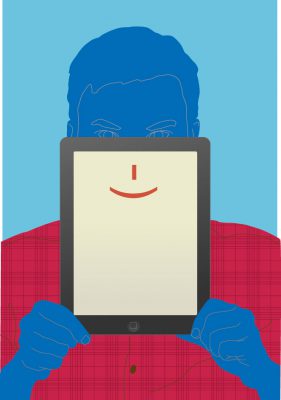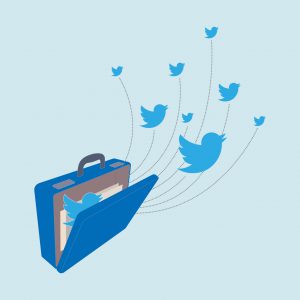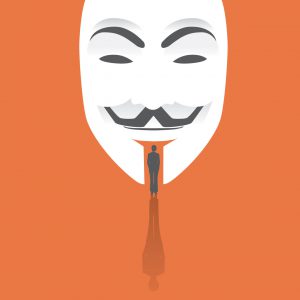
By Laura Pellerine
Though an increasing amount of social interaction is taking place in cyberspace, the lines dictating appropriate online behaviour remain unclear. McGill researchers are examining the effects the Internet is having on groups as diverse as teens, workers and political activists.
When Shaheen Shariff asked a group of under-18-year-olds whether a teenage girl has the right to object to her boyfriend sharing a nude photo of her with his friends without her consent, she was shocked by the responses.
“Forty-six per cent of the students said the girl deserved to be harassed and demeaned because she behaved like a ‘slut,’ ” says Shariff, a professor of integrated studies in education at McGill. The students believed that her right to privacy was destroyed when she sent it to her boyfriend in the first place, even though she had intended it to be seen only by him. This is consistent with a large body of literature on “slut-shaming” that Shariff references in her new book Sexting and Cyberbullying: Defining the Lines for Digitally Empowered Kids.
“As long as girls express their sexuality within the accepted norms of their peers, without standing out too much, they are accepted,” Shariff says. “However, when they are seen as crossing the line to assert their sexuality in ways that may create jealousy and envy, they are labeled ‘sluts’ who deserve to be humiliated publicly and put back in their place. And it’s interesting to try to figure out, what is that line?”
Determining that boundary is at the heart of Shariff’s current research program, Define the Line, which aims to clarify the lines between cyberbullying and digital citizenship, to help inform policymaking, education and law, as well as to better understand adult and youth conceptions of public and private space. The study was partially funded by Facebook’s inaugural Digital Citizenship Grants, as well as by the Social Sciences and Humanities Research Council of Canada.

Cyberbullying can range from postings of non-consensual intimate images to gossip, slut shaming and even defamation. “Once bullying moves into cyberspace, it can be saved, retrieved and distributed until it spreads virally,” explains Shariff, who is considered a pioneer academic on the topic. “You can’t walk away from being harassed online.”
To collect data, Shariff and her team sent out anonymous online surveys to 1,088 children in schools in Montreal, Vancouver, Seattle and Palo Alto, Calif., and also conducted focus groups – one with kids aged 8-12; another with teens aged 13-18. Their work provided, for the first time, clear evidence that cyberbullies have difficulty distinguishing between harmless joking and harmful behaviour.
Young people also appear to have difficulty distinguishing between public and private conversations. “They impulsively share intimate images and confidential information on social media and tell us the information was only meant for friends, but forget that it is a very public sphere. Some kids vent on Twitter without realizing the implications, or use Twitter or Facebook almost as a personal diary.”
The guidelines on critical media and legal literacy Shariff develops will be used to help parents, teachers, policymakers and the legal community better understand the influences and context surrounding young peoples’ behaviour online, so they can foster responsible use of social media. As part of its program, the Define the Line team is developing interactive tools and teaching materials that will be accessible on its website.
Next, Shariff plans to tackle issues highlighted by recent allegations of sexual assault against former CBC host Jian Ghomeshi and American comedian Bill Cosby, as well as by a number of incidents of sexist behaviour and harassment on university campuses in Canada and the United States. She will examine ways in which sexual violence, adult modeling of sexism and misogyny, and systemic tacit condoning of these behaviours prevent women and girls from reporting these forms of abuse.
Reputation first
Parents and their teens are not the only ones having to engage in a dialogue about the consequences of social media postings. So are organizations and their employees.
Emmanuelle Vaast, a professor of information systems at McGill’s Desautels Faculty of Management, recently conducted research on how companies are reacting to their employees’ use of the workplace’s social media platforms like Facebook and Twitter. She examined social media policies from 74 organizations in a variety of industries and sectors from as early as 2005 to as late as 2012.
“Considering that much of social media use is bottom-up and employee-driven in nature, management faces a number of challenges, as it stands to lose some of its traditional control over some of the information technology initiatives being implemented and followed in the organization,” Vaast says.

In her research, Vaast and her co-author Evgeny Kaganer, from the IESE Business School in Spain, discovered that, initially, company guidelines focused more on damage prevention. “Guidelines about what not to post were more frequent and specific than about what to post, and more concerned about mitigating potential risks associated with visibility and the durable traces left by online activities.”
Coca-Cola has reminded its employees that, “the Internet is permanent. Once info is published online, it is part of a permanent record, even if you remove/delete it later,” while the Australian government noted that, “once online material is in the public domain, there is little control or influence over how it might be used or modified.”
However, as social media became more common and well used in the workplace, Vaast and her co-author found that, over time, policies also evolved. “Our results showed how organizations’ reactions to social media evolved from being solely concerned with risk management to also considering its value-generating potential,” Vaast says.
In earlier policies, employees were expected to report to direct supervisors or managers in matters concerning the company’s social media platforms, while in later documents, the role of a social-media manager began to emerge as an authority to oversee and advise employees.
Vaast notes the potential for further investigation in this area, such as examining corporate policies from non-English-speaking countries to better understand cultural and societal distinctions in social media governance in the workplace.
Political weapon
Organizations can design ways to try to minimize threats – to their reputation or their operations – coming from within, but the anonymity provided by the cyberworld is an optimal breeding ground for external threats. Hacktivism, for example – the use of computers or online networks for political ends – has grown significantly in the past decade and Gabriella Coleman, from McGill’s Department of Art History and Communications, predicts that “we are only at the dawn of this movement.”
The anthropologist, who holds the Wolfe Chair in Scientific and Technological Literacy, is the world’s leading expert on Anonymous. Originating in 2003, the once loosely organized, web-based collective that began as online pranksters, has since evolved into “hacktivists,” targeting global issues ranging from anti-digital piracy measures (aimed at preventing illegal downloading) to supporting the pro-democracy protesters in Hong Kong – all from the comforts of their homes and keyboards.
Coleman started to study the group “by accident,” curious about their early protests against the Church of Scientology. “They first pranked the organization, then protested against them, and I was intrigued by this transformation from Internet hell-raisers to activism.”

At the time, in 2008, Anonymous was viewed as politically insignificant, but once they became involved with Wikileaks, they suddenly garnered more attention. “As they became bigger and got into more illegal activities as a form of protest, it became difficult to study them, and I was pretty much the only academic doing it,” Coleman says. “I spent time wherever they spent time, which was online, mostly in chat rooms and chat channels, and communicated with them in private and public channels. I wasn’t in channels where they were planning illegal activities, though; I got some of that information afterward, after people were prosecuted.”
Coleman offers the public a chance to delve deeper into the mysterious subculture of the group in her recent book, Hacker, Hoaxer, Whistleblower, Spy: The Many Faces of Anonymous. “Basic sociological data on the group is really hard to come by,” she says, “but that’s what makes them so interesting.”
One discovery her research unearthed is that while a third of the group had a history of activism prior to joining Anonymous, the rest of its members became drawn to crusading as a result of the group’s actions.
“The majority are between 15 and 25 years old, so there’s a coming-of- age element to this,” Coleman says. “The hacker population around the world is enormous, and a slice of that population became politicized through Anonymous. There is a lot of whistleblowing going on right now, and even though there are big risks and big consequences, it’s not going to go away.”
In the coming year, Coleman will turn her attention to a different aspect of hacking: disability.
“The Internet has given a lot of people with disabilities – particularly people who are homebound – access to a social community that maybe they didn’t have before, or a different place where they are able to work and engage.”
Coleman points out that the history of hacking has many connections to disability. In fact, its underground roots go back to a group of kids who were illegally hacking into the phone system by whistling matching tones in perfect pitch. A number of these “phone phreaks” had a big thing in common: they were blind.
“They were kids stuck at home, they didn’t have a lot of friends, and yet they found freedom through exploring phone systems,” Coleman says. “This is just one example of how digital technology can create social spaces for people with disabilities.”
